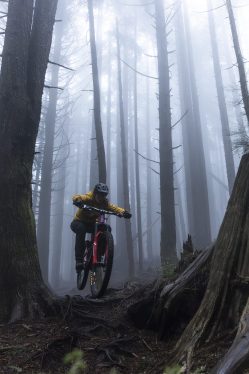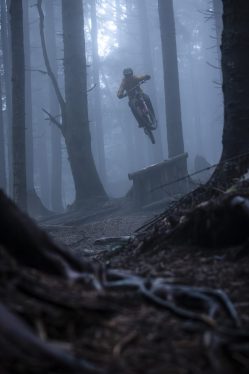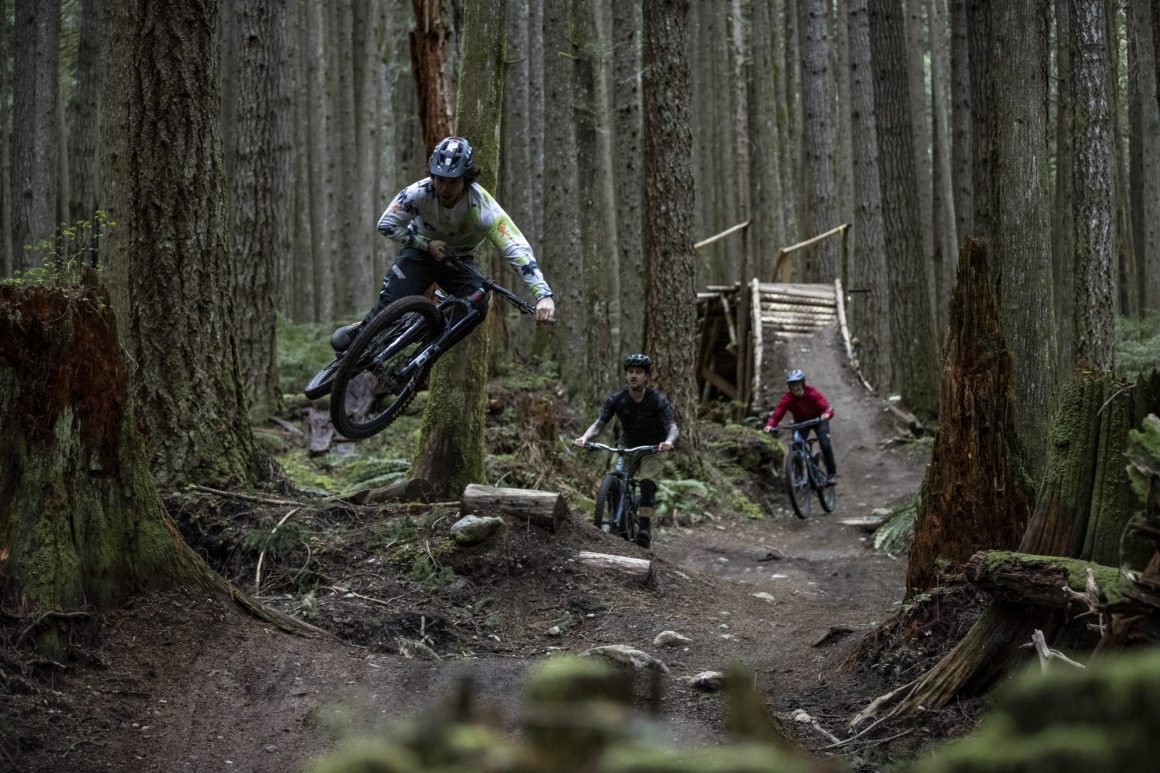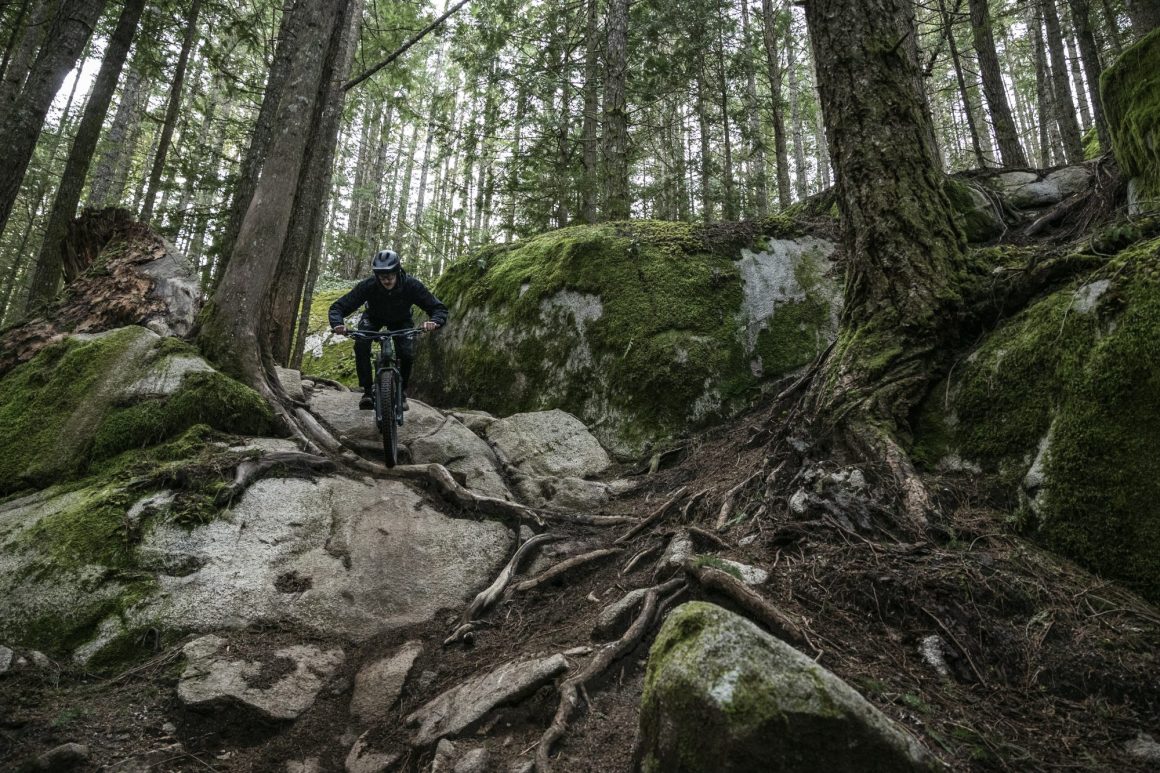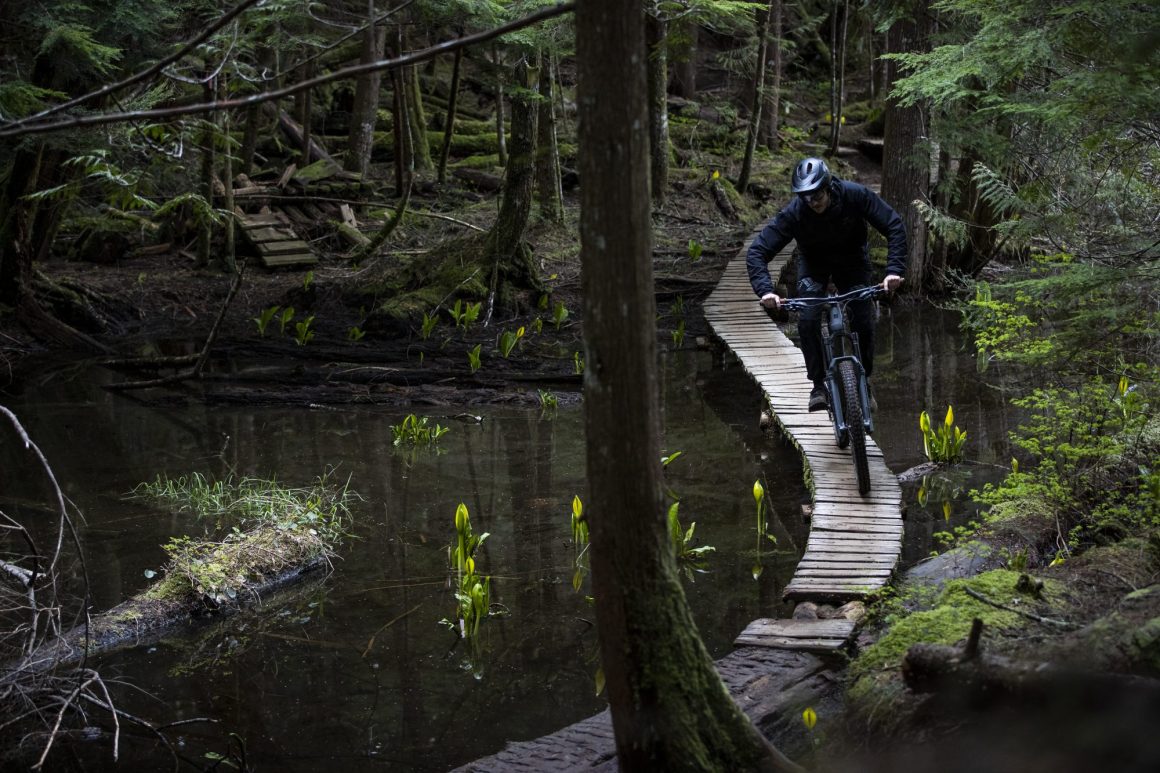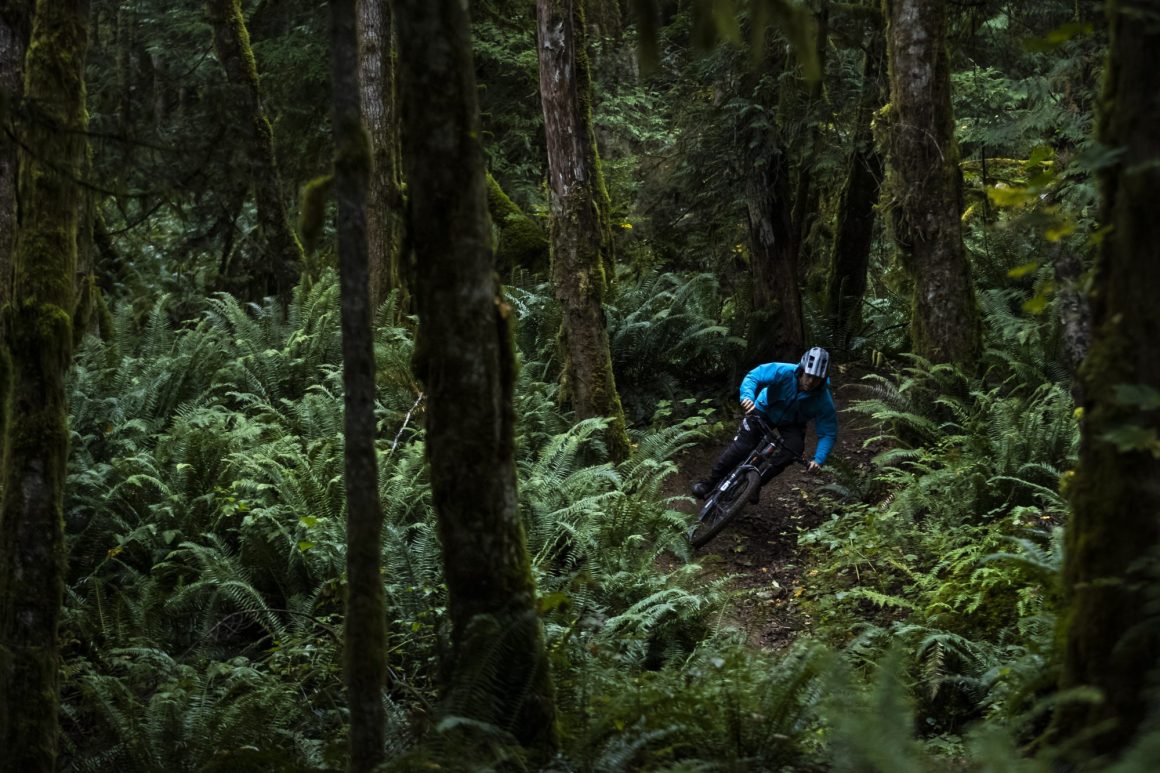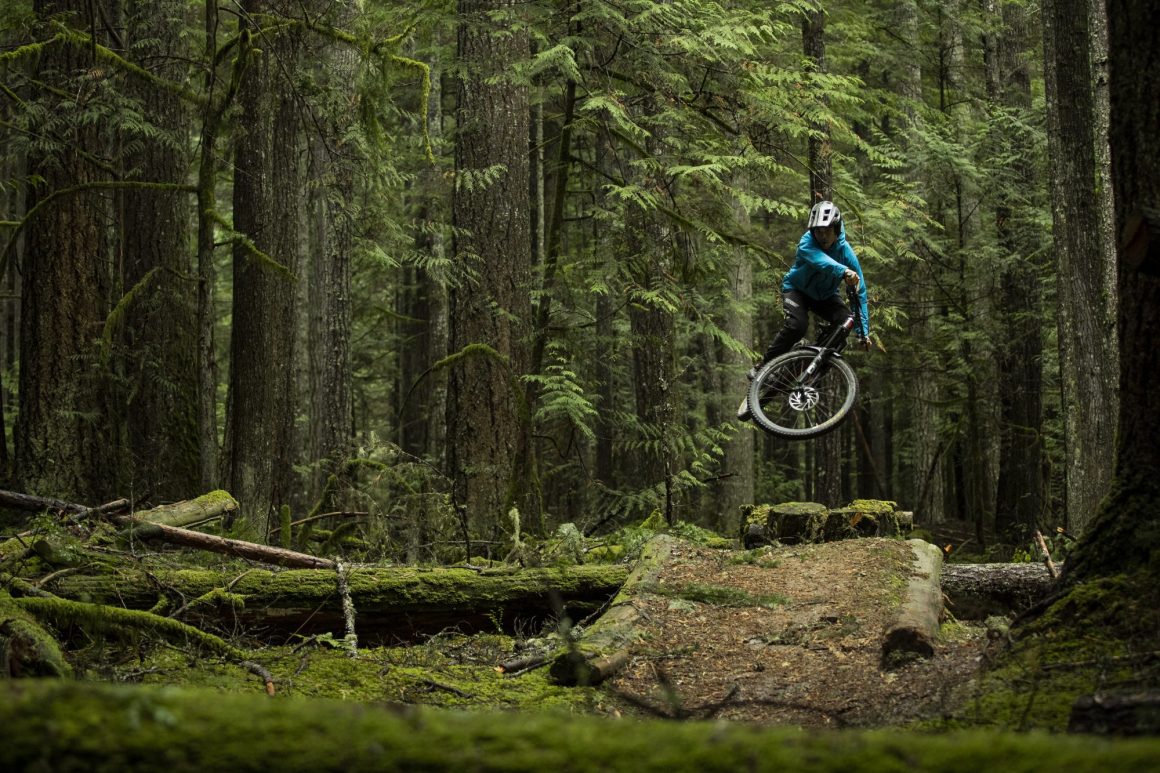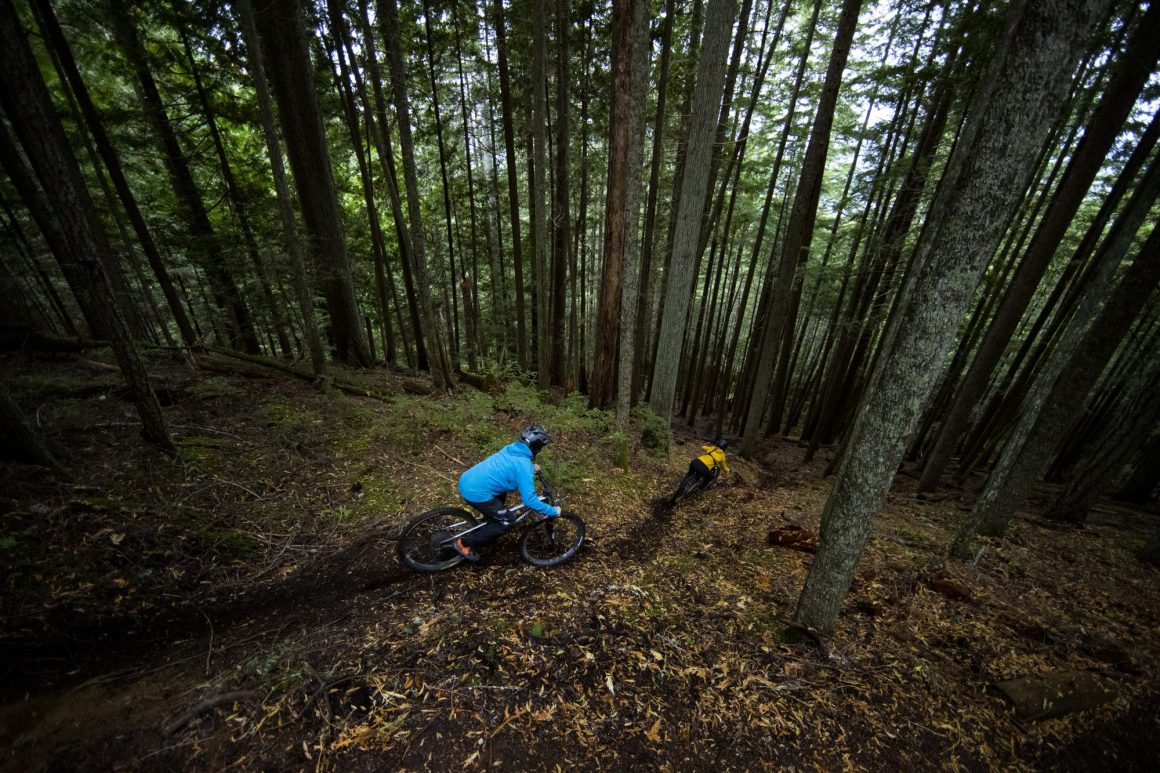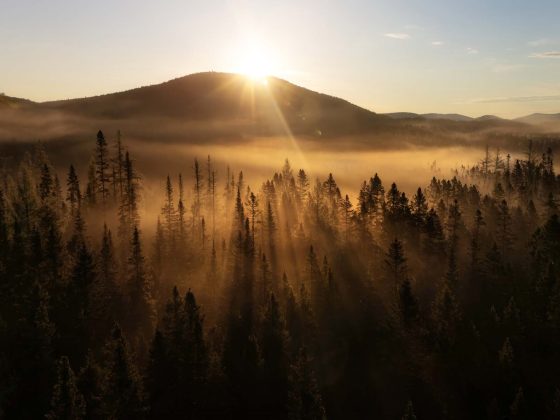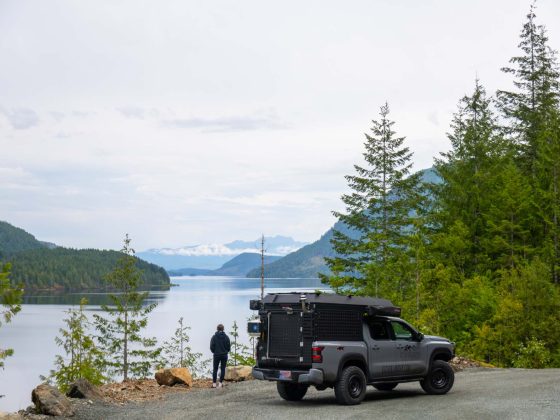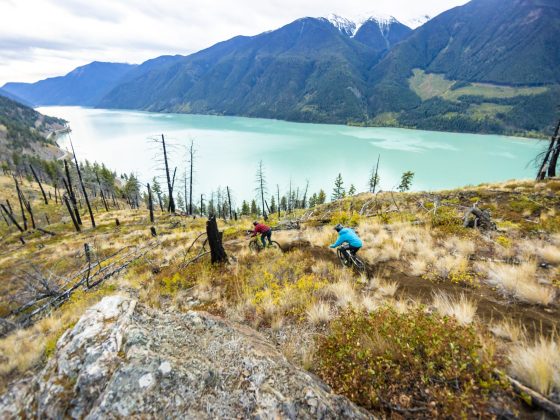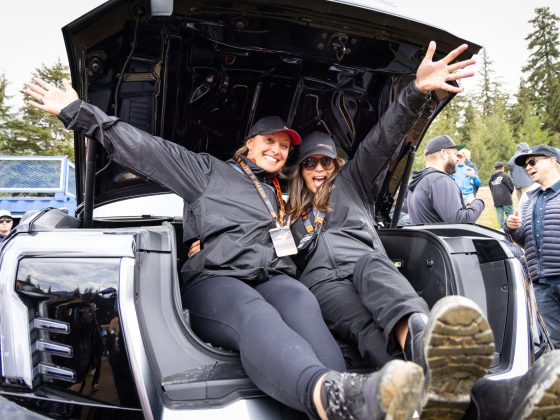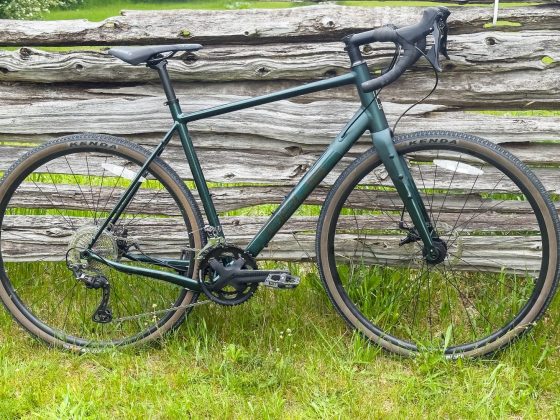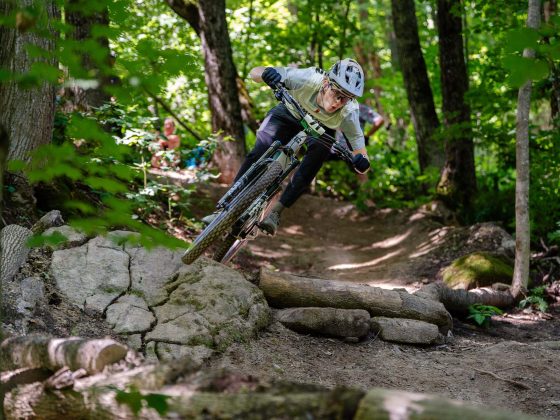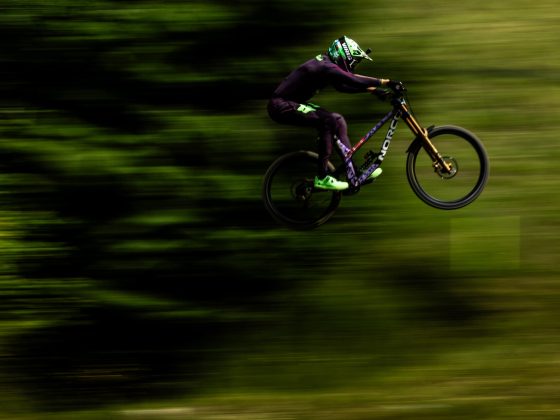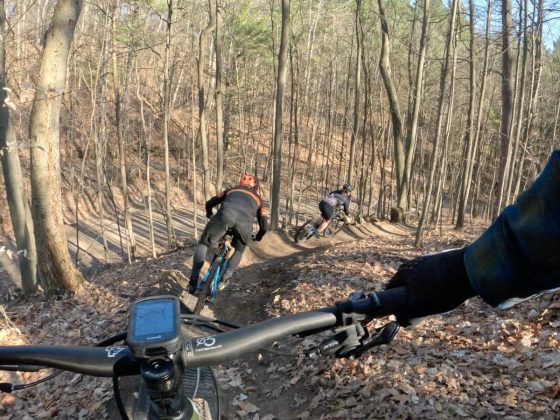In the vast Sea to Sky mountain bike trail network, each community has its own history, struggles and dedicated orgs. Here are a few of those stories.
Words :: Ben Haggar // Photos :: Mark Mackay // Article sponsored by Mountain Bike BC
When you’re sliding down the labyrinth of roots crosshatching Cabin Trail, puckering down the Penthouse slab or blazing over the Mach Chicken gaps, do you ever stop to think: ‘Where did these trails come from?’ In the Sea to Sky, we have a glut of singletrack goodness to gorge on and there’s every origin story imaginable from rake and ride loamers to machine-carved mega projects requiring grants and government approvals. From public to private land, each community has its own history, struggles and dedicated organizations with armies of volunteers building, maintaining and advocating for trails.
The North Shore
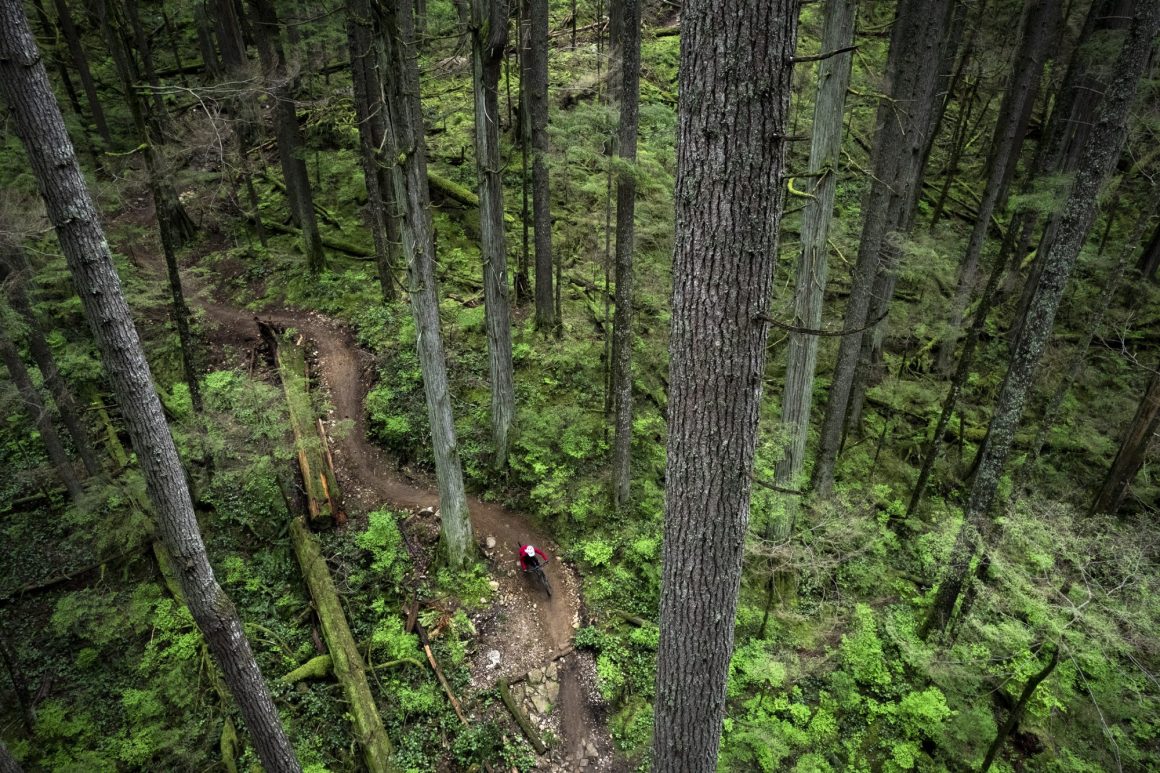
The origin story of The Shore is seminal to the proliferation of mountain biking not only in the corridor but also on a global scale. It all began in the ’80s when Chaz Romalis and his Deep Cove buddies began riding their modified cruiser bikes on the flanks of Mount Seymour on skidder roads and hiking trails like Baden Powell and Old Buck. Riders in neighbouring Lynn Valley were doing the same thing on Fromme but when the overly technical sections weren’t conducive to bikes, ride-arounds were scratched into the soft deep soil. A seminal moment came when Todd ‘Digger’ Fiander laid a cedar plank across a dip and the first ‘feature’ was born. The ’90s saw an explosion of trail development with creativity and boundary-pushing stunts high in the canopy from builders like Dangerous Dan spreading like the tendrils of a loam-encrusted Kraken over the three North Shore mountains.
The exponential growth came to a tipping point when media exposure of the burgeoning scene shone a newfound spotlight on the fringe sport, garnering criticism towards riders and builders for their renegade trails (built on public and private land without permission) and apparent disregard for environmental consideration. This led to the Great Chainsaw Massacre where the authorities annihilated the intricate woodwork and log rides and builders were threatened with lawsuits. A unification of riding factions was needed and in 1997 the Secret Trails Society merged into the North Shore Mountain Biking Association (NSMBA) to advocate for the sport with the numerous land owners/managers, and government officials.
The exponential growth came to a tipping point when media exposure of the burgeoning scene shone a spotlight on the fringe sport, garnering criticism towards riders and builders for their renegade trails…
The NSMBA is in the business of maintaining, not building trails and supports a paid trail crew, but the lion’s share of maintenance is completed by volunteers. It’s unlikely that there will be any new sanctioned trails popping up on the Shore in the future unless it’s on private land like the Grouse Mountain Bike Park which opened this past June, but if there’s not enough trails on the shore to keep you satiated, I want to know what brand of e-bike you’re on.
Related content from ML:
Squamish

Unlike the Shore, trail development and advocacy in Squamish was spurred on by the legendary Test of Metal (TOM) bike race founded in 1996 by Cliff Miller. The drive to create new trails and expand the course for the wildly popular event was a driving force towards trail development while simultaneously downhill riders were creating steeper shuttle trails in the Diamond Head area like 19th Hole, Cakewalk and Speed Ball (now Angry M). Trials moto riders were also instrumental in early development with many of their trails usurped by mountain bikers.
Squamish’s logging legacy has never been far away with private and public land owners as well as tenure holders such as BC Timber Sales, Black Mount Logging, and the Squamish Community Forests staking claim to the towering forests that shade the trails. The Squamish Off Road Cycling Association (SORCA) formed in 1992 and developed a broad master plan to incorporate trails into a legitimate network citing that if trails were legitimately on the map, they were less likely to be logged. SORCA also saw the need early on for trail maintenance hosting dig days for over 30 years now.
This preservation mindset ushered in a new era of trail development and grants for trails like Half Nelson solidified Squamish’s trail legacy. These days new trails need to go through a robust approval system with a section 57 government application and consultation with the Squamish Nation who, in 2022, signed a landmark Memorandum of Understanding with SORCA to jointly work towards trail and land stewardship for future generations.
Sunshine Coast
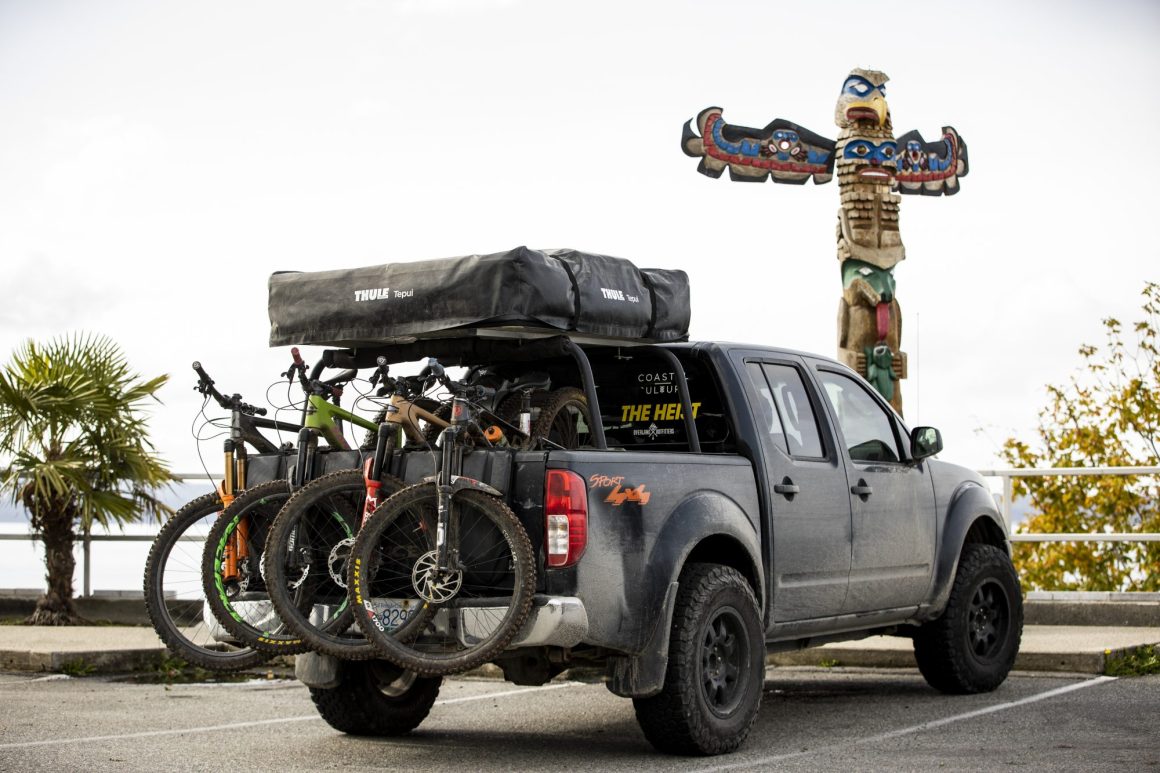
The Sunshine Coast is geographically removed from the complex controversies that plague larger urban centres and following in the footsteps of cedar shakers from the early 1900s, have quietly been chipping out trails in the deep dark coastal woods. Through the ’90s, independent pockets of builders were quietly toiling away from Gibsons to Powell River and every nook in between.

Through the ’90s, independent pockets of builders were quietly toiling away from Gibsons to Powell River and every nook in between.
An early influence that has had lasting effects was the inclusion of the Sprockids curriculum at Gibson’s Elementary School by Doug Detwiller. The program not only resulted in the Sprockids Bike Park above Gibsons, but has also been influential with students. Both professional riders Curtis Robinson and Dylan Dunkerton were Sprockid alums who have gone on to build many trails around Sechelt with their magnum opus: Coast Gravity Park.
Another ferry ride north is the singletrack paradise of Powell River. The original building crew here was the BOMB Squad (Bloody Old Men’s Brigade) who eventually teamed up with the ‘Chain Gang’ who were more two-wheel focused to create the network of over 400 km of trails. The Qathet Regional Cycling Association is the main association involved purely in mountain bike trail maintenance and advocacy with over 5500 volunteer hours logged per year while other organizations like the Outdoor Recreation Users Group Trail Society (ORUG) is another stakeholder for multi-use trails.
The bottom line is that whether you’re within sight of Metro Vancouver or the hippie enclave of Robert’s Creek, there is an untold wealth of history, passion, and blood, sweat and tears going into each and every trail. Historically (as well as today), these works of art are overwhelmingly built and maintained by volunteers who pour thousands of personal hours into building instead of riding. Mountain bikers are a passionate bunch (I’ve yet to see a pickleball club shovelling asphalt for their courts), so if you’re riding these trails, please consider donating to the organizations who continue to put up the good fight to keep these trails alive for us all.
To learn more, visit Mountain Biking BC.
